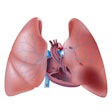Dear AuntMinnie Member,
Is your imaging facility ready for new accreditation requirements from the Joint Commission that go into effect July 1? Many facilities aren't, in particular with regard to CT protocols and radiation dose reporting.
That's according to a new article we're featuring in our CT Community, based on a presentation at the International Symposium on Multidetector-Row CT earlier this month. In the talk, Dr. Myron Pozniak of the University of Wisconsin offered guidance on what will be expected from sites operating CT scanners, and he also shared the results of a recent survey indicating that many facilities are woefully underprepared. Learn more by clicking here.
While you're there, check out this story on how lung disease may be going undiagnosed in many smokers who don't appear to have any problems with lung function. Could CT be used to identify these individuals?
Also read our coverage of a new study published today in Radiology by Dr. Claudia Henschke, PhD, and colleagues from the International Early Lung Cancer Action Program (I-ELCAP). They used low-dose CT to follow nonsolid lung nodules, all of which remained benign, and found they could spare patients unnecessary interventions. Learn more by clicking here.
Get these stories and more in our CT Community, at ct.auntminnie.com.
New florbetaben-PET study
In our Molecular Imaging Community, new research suggests that PET with a florbetaben radiotracer could offer an early look at the development of Alzheimer's disease through the early detection of beta-amyloid plaque.
Researchers from Spain found that florbetaben was able to detect diffuse beta-amyloid plaque in certain regions of the brain, which is believed to be a precursor to Alzheimer's. The research could lead to new clinical indications for florbetaben, which is sold under the trade name Neuraceq.
Read more by clicking here, or visit the community at molecular.auntminnie.com.
OCT surgical guidance
Finally, check out our Advanced Visualization Community for an article on how researchers from Johns Hopkins University developed a technique that uses optical coherence tomography (OCT) to guide brain surgery. You can reach that story by clicking here, or go to av.auntminnie.com.



















